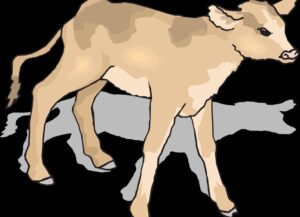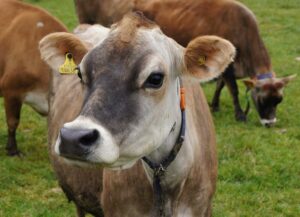Fernando Diaz
There has been plenty of research during the past decade testing the effects of roughage on the diet of pre-weaned heifers. The results obtained have not been consistent however; while some trials show an increase in total intake of solid feed and average daily gain (ADG), others have reported slower animal growth or simply no effect at all.
The inclusion of roughage in young heifer feeding programs, either free choice or blended with concentrates, reduces the overall energy density of the diet, since the energy concentration of the forage fraction is lower compared to the concentrates. If this approach is going to be considered, there are several factors to consider.
Presentation form of the starter feed determines the need for forage
One of the most important factors is the physical form of the starter ration. In general, pre-weaned heifers show greater dry matter (DM) intake and growth when the forage is included in the feed as meal or pellets. There are no positive results, however when the forage fraction is included in a texturized complete feed a blend of particles, flaked or whole grains.
This is due to starch degradability in the rumen, both the meal and the granular form, since ground cereal grains are fermented rapidly in the rumen and can lead to lower pH and eventually acidosis, similar to adult dairy cows. In this instance, forage intake can increase ruminal pH , since the heifers secrete saliva when chewing the forage (during intake and rumination), which has a buffering effect on the rumen contents. In texturized rations however, starch degradability is slower and rumen pH remains higher, making the supply of forage unnecessary.
Supplying forage in combination with texturized feeds can also be counterproductive. In a recent study published in “Applied Animal Science”, the authors (Hill et al. 2019) reported that lower quality grass hay (5.8% protein and 62.5% fiber) fed to 7 week-old Holstein heifers reduced the digestibility of the DM, organic matter (OM) and protein in 12.2, 11.9 y 11.1%, respectively. Although hay intake did not affect starter intake, the researchers reported a negative linear correlation between hay intake and the digestibility of the OM such that for each 100 g of hay decreased the OM digestibility by 3.7 percentage units.
Amount and type of forage also matter
Other factors to consider are the amount and type of forage included in the diet. When the forage is processed and mixed with the starter, it is advisable for the forage not to exceed 5% of the blend; higher concentrations can reduce DM intake because of rumen fill.
With regards to the type, hay is preferred over fermented forages (silages), and within the former, grass hay is the ideal one, since its palatability in young animals is higher than that of alfalfa hay and cereal grain straws.
About the author
Fernando Diaz is the Dairy Knowledge Center’s Director. Dr. Diaz works as an independent Dairy Nutrition and Management Consultant. He provides consultation to dairies and feed companies including nutrition and feeding management, forage and crop plans, and research and product development of new feedstuffs, additives and technologies for dairy cows. Fernando lives in Brookings, South Dakota and can be reached at fernando@dairykc.com.
© 2020 Dairy Knowledge Center. All Rights Reserved.











